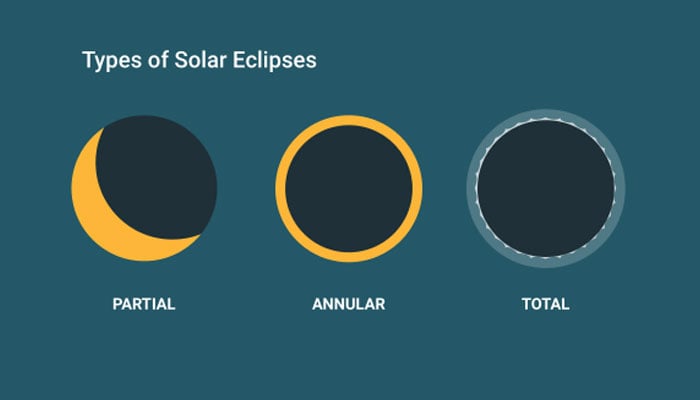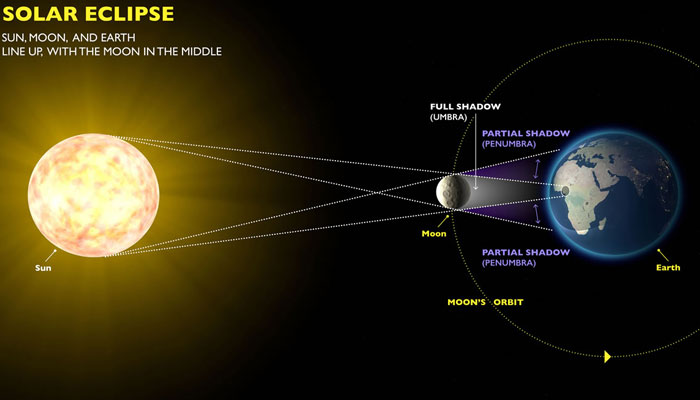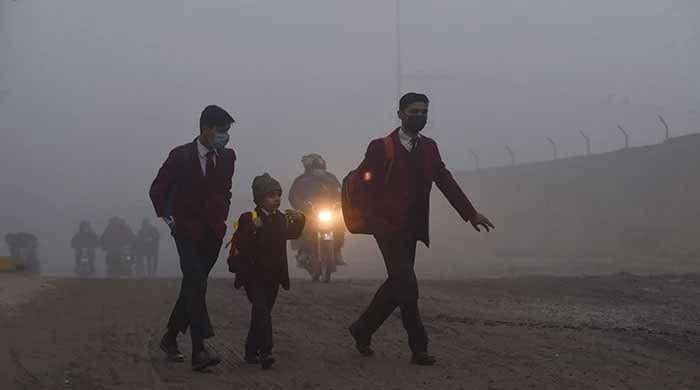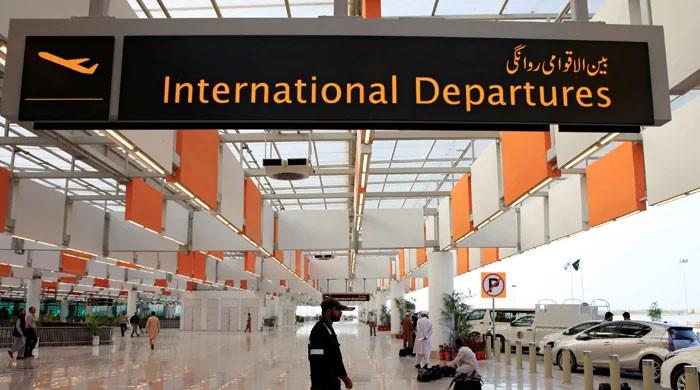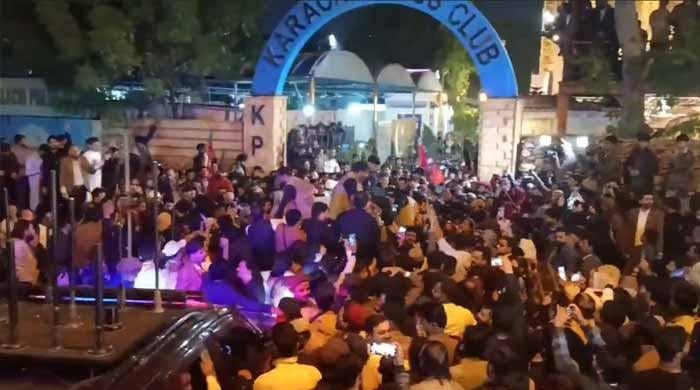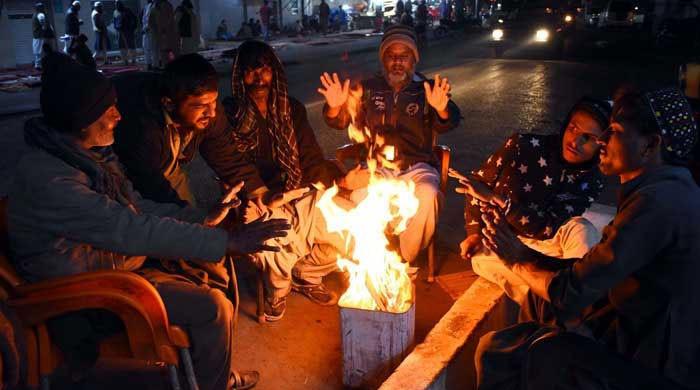Solar eclipse 2020 live updates: How and when to watch the suraj grahan in Pakistan
A solar eclipse, or suraj grahan as it is locally known, is set to occur on June 21 in Pakistan and will be live streamed here
June 20, 2020
A solar eclipse, or suraj grahan as it is known in Pakistan, is set to occur on June 21 and would be visible in some cities across the country, the Pakistan Meteorological Department (PMD) Climate Data Processing Centre has said in a statement.
According to the centre, "an annular solar eclipse happens when the moon covers the sun's centre, leaving the sun's visible outer edges to form a 'ring of fire' or annulus around the moon".
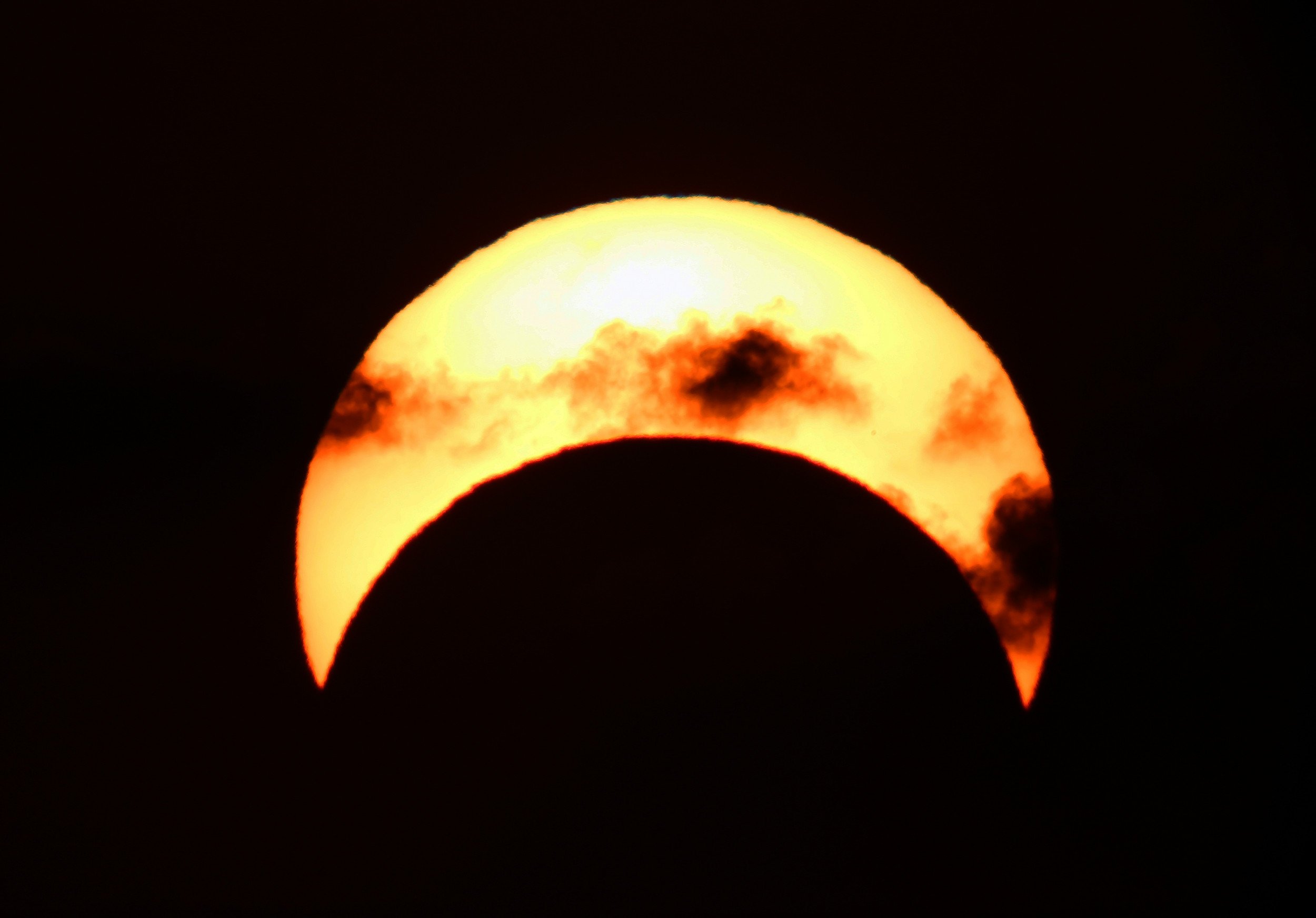
When to tune in?
The partial eclipse begins at 08:46am local time and ends at 2:34pm with the greatest eclipse occuring at 11:40am, according to the PMD.
Which of Pakistan's cities can view the eclipse?
Information provided in the statement indicated that people living in Islamabad, Lahore, Karachi, Peshawar, Quetta, Gilgit, Muzaffarabad, Sukkur, and Gwadar could witness the eclipse at various partial levels, with only those in Sukkur to see the annular eclipse in almost its entirety — with a solar coverage of 98.78%.
Gilgit would have the least solar coverage in the eclipse, at 74.88%, the centre added.
Where else will it be visible?
The PMD noted that apart from Pakistan, the solar eclipse would also be visible in parts of Africa — including the Central African Republic, Democratic Republic of the Congo (DRC), and Ethiopia — as well as India and China.
Solar Eclipse 2020 LIVE updates:
1:13pm - Solar eclipse comes to an end in Karachi, Quetta other cities
The ‘ring of fire’ solar eclipse has come to an end in Karachi, Quetta, Islamabad, Lahore and other cities in Pakistan.
In Pakistan, the ‘ring of fire’ was seen in Sukkur, Larkana and Gwadar.
1:00pm - Partial solar eclipse in Philippines
12:30pm - Dramatic ‘ring of fire’ witnessed from Africa to India and southern China
12:00pm - Solar eclipse across the world
11:35am - Solar eclipse in Colombo, Sri Lanka
11:30am - Solar eclipse in Rajasthan, India
11:23am - Temperature drops in cities in Sindh
Sukkur, Larkana and Hyderabad saw a drop in temperatures as they witnessed a solar eclipse.
The 'ring of fire' appeared in Sukkur at 11:08 for a few seconds on Sunday. Sukkur is one of the few cities in Pakistan where the 'ring of fire' appeared.
11:08am - ‘Ring of fire’ witnessed in Sukkur
The 'ring of fire' appeared in Sukkur at 11:08 for a few seconds on Sunday. Sukkur is one of the few cities in Pakistan where the 'ring of fire' appeared.
11:05am – Solar eclipse reaches its peak Karachi
The solar eclipse has reached its peak in Karachi. According to experts, Karachi will not witness a ‘ring of fire’ like other cities in the country.
The ‘ring of fire’ will be witnesses in Sukkur, Gwadar and Larkana.
11:00am - Namaz-e-Kasoof offered across Pakistan
Namaz-e-Kasoof is being offered across the country as Pakistan witnesses the ‘ring of fire’ solar eclipse.
In Islam, Namaz-e-Kasoof or eclipse prayer is offered when solar or lunar eclipses occur. It is typically performed in groups, in mosques led by an imam.
10:35am - Solar eclipse does not affect health: experts
Experts suggest that solar eclipse does not affect a person’s health or mood as it has come to be believed. However, specialists have warned against watching the solar eclipse directly as it may harm the eyes.
10:20am - 10% of the sun eclipsed in Karachi
According to director Science and Technology, Professor Javed Iqbal 10% of the sun has been eclipsed in Karachi. The solar eclipse will reach its peak at 11:40am in Karachi and end at 12:46am.
10:05am - Here’s how the solar eclipse works
9:50am - Solar eclipse begins in Lahore
Solar eclipse is being observed in Lahore right now. The solar eclipse will reach its peak at 11:26am and end at 1:10pm in Lahore, according to the MET office.
9:45am - Solar eclipse to reach its peak at 11:40am in Karachi
Like other cities in Pakistan, Karachi is also witnessing the ‘ring of fire’. According to the MET office, the solar eclipse will reach its peak at 11:40am in Karachi and end at 12:46am.
9:40am - ISST makes special arrangements to view solar eclipse
The Institute of Space Science and Technology (ISST) University of Karachi has made arrangement to observe the annular solar eclipse at the ISST’s Astronomical Observatory today.
9:35am - Solar eclipse begins in Sukkur, Gwadar, Quetta
The ‘ring of fire’ is being witnessed in Pakistani cities of Sukkur, Gwadar and Quetta along with other cities across the world today.
Experts says the solar eclipse will be witnessed 99% in Sukkur and Gwadar and most cities in Balochistan.
9:30am - 'Ring of Fire' to remain visible from 09:26am to 1:00pm in Pakistan
The ‘ring of fire’ will remain visible across Pakistan from 09:26am to 1:00pm. Experts have warned against looking directly as it can permanently damage the eyes.
During a solar eclipse, the sun rays become so powerful that they can permanently damage the retina. These powerful UV solar radiations can surprise you and penetrate your eyes before you have a chance to look away.
9:25am - Republic of Congo to be first to witness ‘ring of fire’
The "ring of fire" will first be seen in northeastern Republic of Congo at 5:56 local time (04:56 GMT) just a few minutes after sunrise.
This is the point of maximum duration, with the blackout lasting 1 minute and 22 seconds.
Arcing eastward across Asia and Africa, it will reach "maximum eclipse" — with a perfect solar halo around the Moon — over Uttarakhand, India near the Sino-Indian border at 12:10 local time (6:40 GMT).
More spectacular, but less long-lived: the exact alignment of the Earth, Moon and Sun will be visible for only 38 seconds.
9:15am - 'Ring of fire'solar eclipse to dim Africa, Asia
Skywatchers along a narrow band from west Africa to the Arabian Peninsula, India and southern China will witness a dramatic "ring of fire" solar eclipse.
So-called annular eclipses occur when the Moon — passing between Earth and the Sun — is not quite close enough to our planet to completely obscure sunlight, leaving a thin ring of the solar disc visible.
06:00am - Don't watch it with naked eyes
It's strongly advised that no one should watch the Solar Eclipse 2020 with naked eyes. It can permanently damage the eyes. When the Moon comes in between the Earth and the Sun, the sun rays become so powerful that they can permanently damage retina (most important part of the eye). These powerful UV solar radiation can surprise you and penetrate your eyes before you have a chance to look away.
Is it alright to watch the solar eclipse with bare eyes as only a little part of the sun is visible?
NASA says even if the 99 percent of the sun's surface is covered during the partial phases of a solar eclipse, the small visible part can still burn the retina.
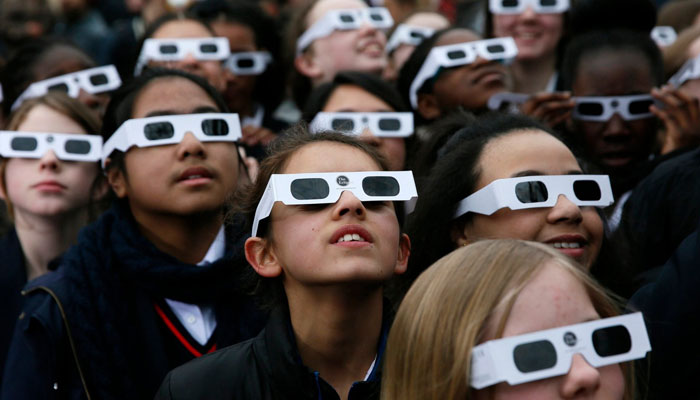
Is it advisable to view the solar eclipse through dark lenses or film?
No. It's not safe. If you watch the solar eclipse while wearing dark lenses or film, it still can lead to permanent vision loss.
Are there safe ways to observe the solar eclipse?
Yes, there're. Wear your protective eyeglasses, binoculars, use a telescope or a box projector to safely witness the solar eclipse. You can also buy solar filters or eclipse glasses. Make sure to buy these only from a reliable source and they are approved by NASA or ISRO.
If you want to capture the images of the eclipse, you can use your smartphone or a DSLR camera for the purpose.
05:00am - NASA tweets
The National Aeronautics and Space Administration (NASA) tweeted ahead of two special celestial events. According to NASA, there is no part of an annular eclipse during which it is safe to look directly at the Sun. You must use a proper solar filter or an indirect viewing method during all phases of the eclipse — even if only a tiny sliver of the Sun is visible around the Moon’s edge, that’s still enough to cause damage to your eyes.
According to NASA, earth has a slight tilt as it orbits the Sun. It said June is one of two times each year when that tilt is most prominent: a solstice. At the solstices, happening each year in June and December, Earth's tilt is at the greatest angle with respect to the plane of its orbit, meaning that one hemisphere is tilted towards the Sun, and the other hemisphere is tilted away. The northern hemisphere is tilted towards the Sun, so the June solstice is the day on which the Northern hemisphere receives the longest stretch of daylight for the year.
04:00am -What is annular solar eclipse?
The name 'annular' is derived from the Latin word for ring, 'annulus.' Annular eclipses are named for their darkest point even if they only last less than a second. An annular solar eclipse happens when the Moon covers the Sun's center, leaving the Sun's visible outer edges to form a “ring of fire” or annulus around the Moon. People in many parts of the world will see a rare solstice annular solar eclipse on the same day as the June solstice.
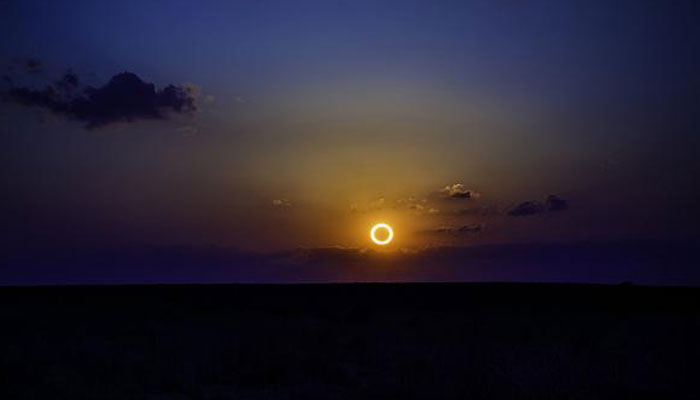
03:00am - What is solar eclipse?
The solar eclipse happens when the Moon comes between the Earth and the Sun and blocks the rays of the Sun from directly reaching the Earth. So, it creates a solar eclipse on Earth. There are three kinds of solar eclipses — total, partial, and annular. The June 21 event will be an annular solar eclipse.
